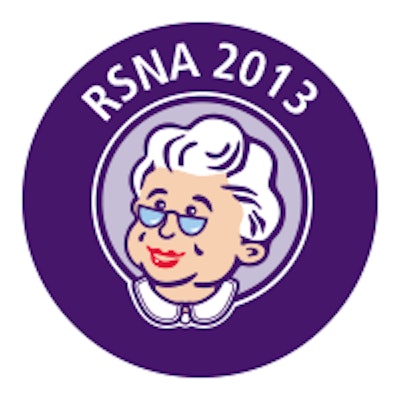
CHICAGO - Computer-aided detection (CAD) technology shows potential for identifying hard-to-find renal calculi and lesions on CT colonography (CTC) exams, according to research presented on Sunday at RSNA 2013.
A group from the U.S. National Institutes of Health (NIH) found that its internally developed CAD method yielded sensitivity as high as 90% at less than 20 false positives per patient. It achieved sensitivity of 70% for detecting renal calculi with very few false positives per patient.
"[The CAD system] significantly outperformed other conventional approaches that are more widely used for lesion detection in CAD," said presenter Dr. Ronald Summers, PhD.
Extracolonic findings -- abnormalities on the study but not in the colon area -- occur in 8.6% of CTC (also known as virtual colonoscopy) exams. The kidneys are the primary source of these extracolonic findings, according to Summers.
As a result, the researchers sought to develop and validate a CAD system for detecting renal lesions and calculi, which can be challenging to spot. CT attenuation of renal lesions can be similar to that of normal kidney, while renal calculi can sometimes be very tiny and embedded in the image noise, he said.
The group tackled this problem by first segmenting both kidneys on supine CTC images. Kidney segmentation was performed by embedding a probabilistic kidney shape model into a Markov random field, Summers said.
A manifold diffusion technique was then deployed to find lesions protruding from the surface of the kidney.
"This has some advantages over other surface-based descriptors such as shape index because it operates in a more global fashion rather than some of the more curvature operators," he said.
For renal calculi detection, the team applied a technique called total variational (TV) flow to remove image noise in the kidney regions. A maximally stable extremal region (MSER) detector was then applied to identify calculi candidates.
Summers and colleagues studied their approach for detecting renal lesions in an experiment involving 120 CTC scans from 120 patients with a mean age of 57 ± 7 years. Of these, 70 had at least one lesion. There were 130 total lesions, including 101 exophytic and 29 endophytic lesions. Mean size was 2.0 ± 1.4 cm (range, 0.3-6.6 cm) and mean density was 14 ± 19 HU (range, 2-66 HU).
Forty of the CTC scans were used in training, while 80 were employed in testing.
The group also evaluated the CAD technique for detecting renal calculi in 180 CTC scans from 180 patients with a mean age of 58 ± 7 years (range, 43-77 years). Ninety patients had at least one calculus, for a total number of 176 calculi. The calculi had a mean volume of 38 ± 66 mm3 (range, 1-433 mm3) and a mean density of 528 ± 377 HU (range, 86-1684 HU). Ninety CTC scans were used for system training and 90 were used in the testing dataset.
All of the CT images were generated during the U.S. Department of Defense CT Colonography Screening Trial. These studies were acquired using single breath-hold scanning on either a LightSpeed four-channel CT or LightSpeed Ultra eight-channel CT scanner (GE Healthcare) with 1.25- to 2.5-mm section collimation, 15-mm table speed, a 1-mm reconstruction interval, 100 mAs, and 120 kVp.
In lesion detection performance, free-response receiver operator characteristics (FROC) analysis showed that the manifold diffusion technique significantly bested five other conventional shape features (Gaussian curvature, maximum curvature, mean curvature, minimum curvature, and shape index) commonly used for lesion detection in CAD. Lesion size and signal intensity did not have a significant effect on accuracy.
For detecting calculi, the team's method significantly outperformed a simple thresholding-based technique. There was a trend toward better detection of larger and denser lesions and calculi, but the difference was not statistically significant, Summers noted.





















